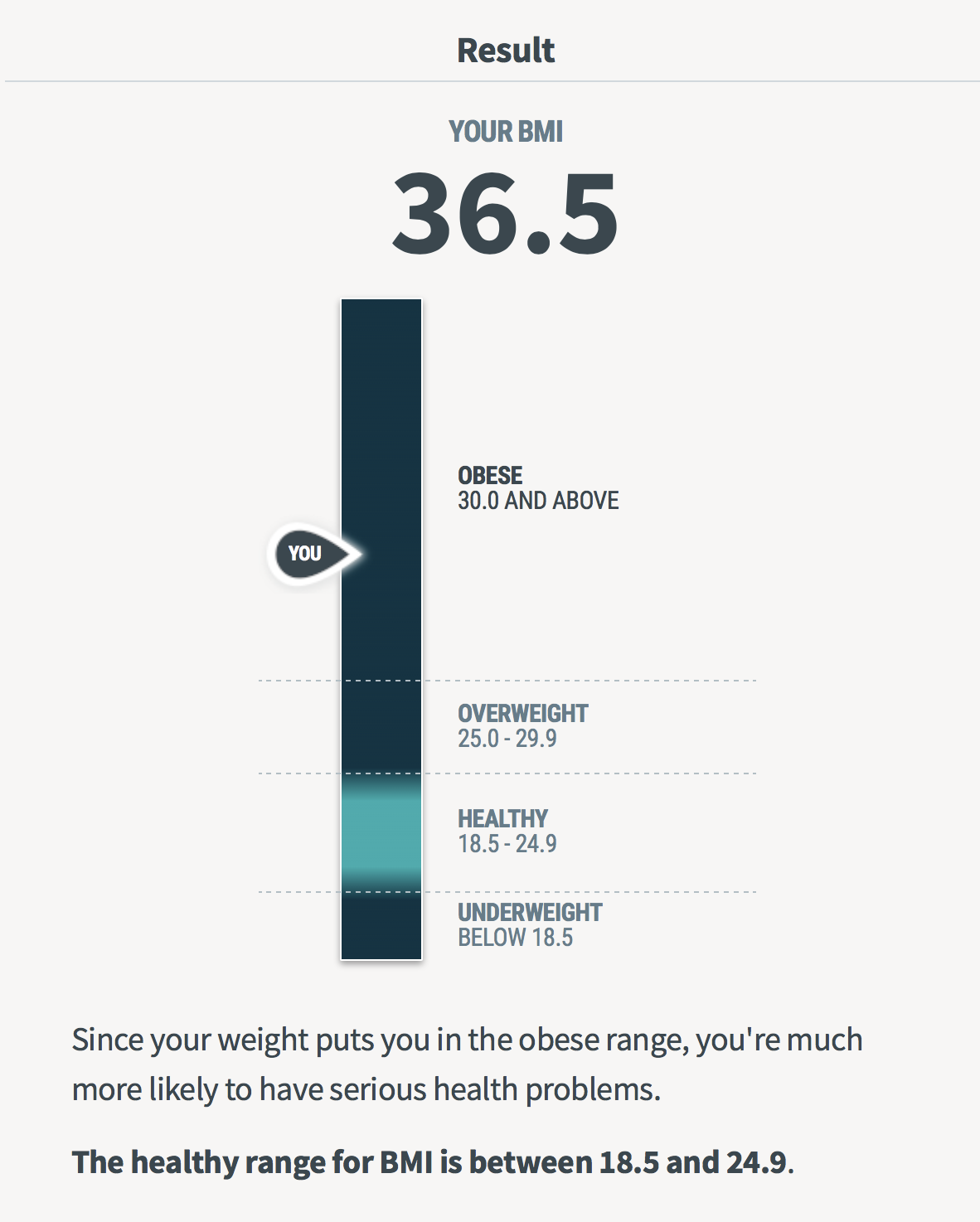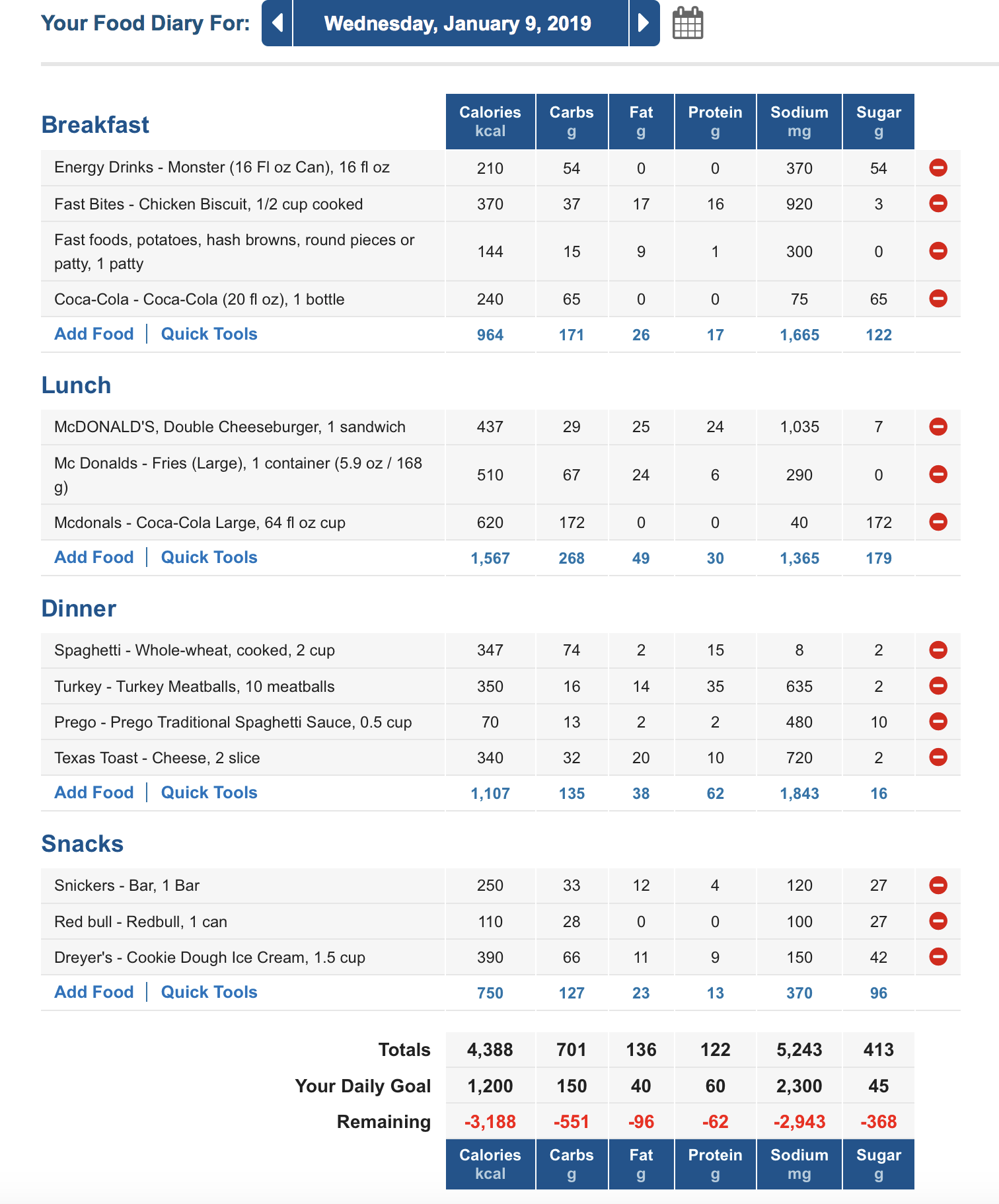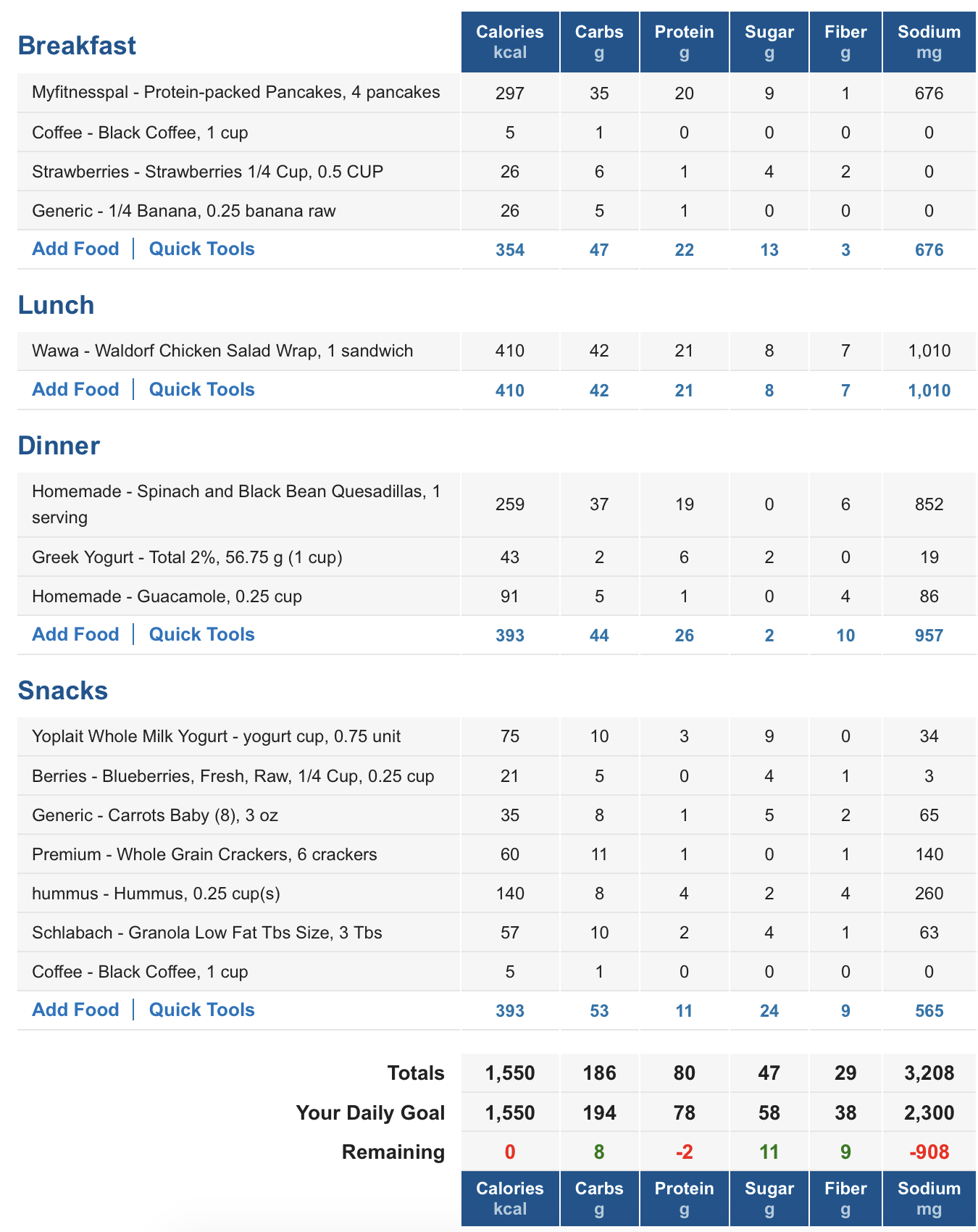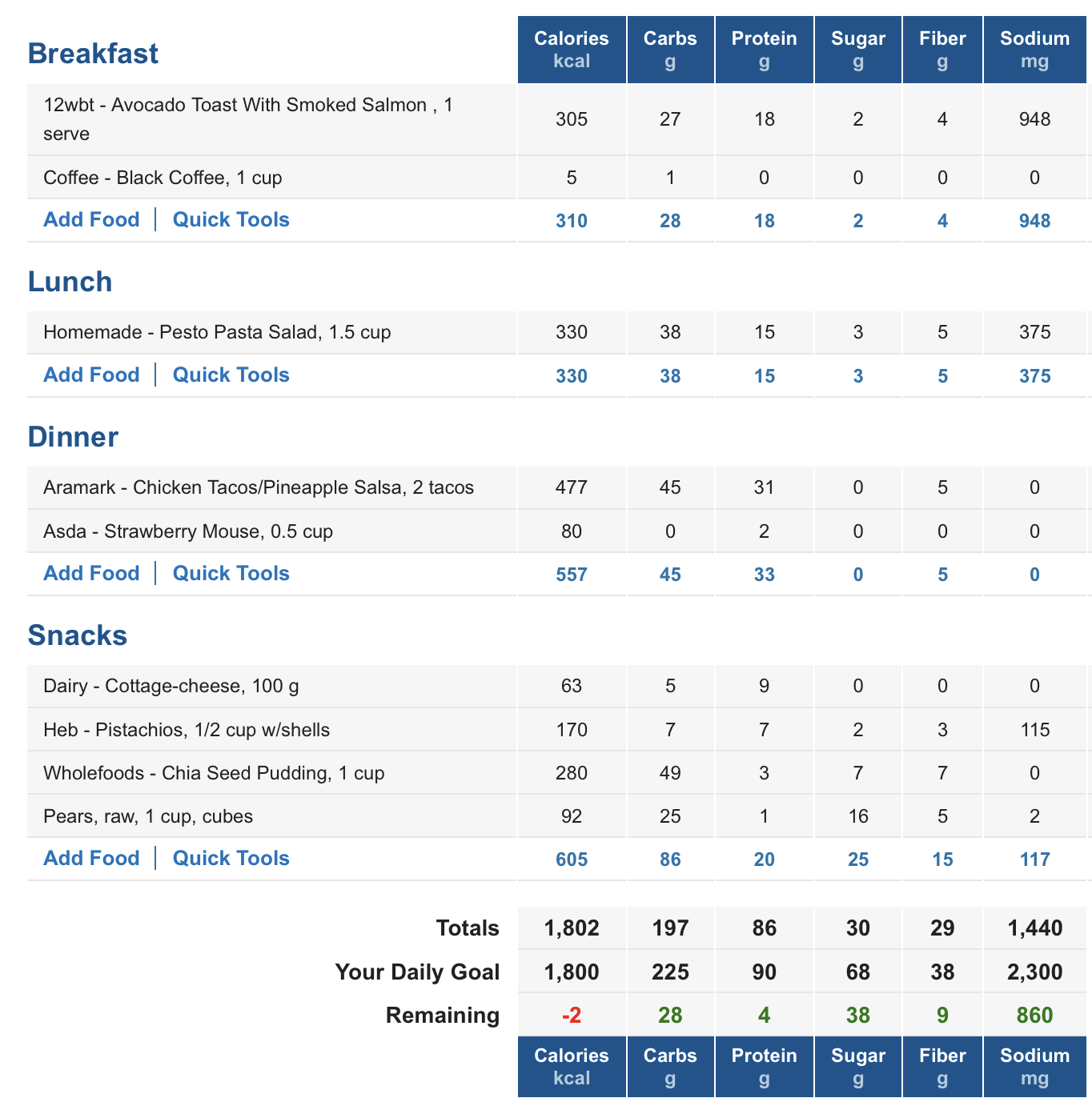Obese Patient Nutrition Management
| ✅ Paper Type: Free Essay | ✅ Subject: Nutrition |
| ✅ Wordcount: 1330 words | ✅ Published: 23 Sep 2019 |
John’s Health Maintenance Protocols
John is a 45 years old patient who lives in Southeast US. He weighs 255 pounds and his height is 5’10. John is married and he has two children in middle school. As a new patient to MB Nutrition Center, we will need to assess John thoroughly to determine his official nutritional status as a baseline measurement. These measurements of data collection will allow MB Nutrition Center to best assess John’s status and provide him with an individualized treatment plan. After speaking with John I wanted to do a 24hr food recall analysis to see what he eats on a daily basis. When I look at the chart John is over the obesity number, which is 30 or greater. John is obese and people who are overweight or obese often have health problems that may increase the risk for heart disease (Niddk.nih.gov 2015).

The BMI calculated may not be the most accurate assessment of John’s nutritional status, but it is a baseline measurement that we will be able to compare to later on in his treatment. John’s main concern is feeling lethargy all the time and that’s because when you are overweight that increases the risk of extreme exhaustion and fatigue. He was also concerned about having any kind of heart disease.
Clinical Assessment and Equipment Used
One of the most under-rated (by customers) yet important assessments used for the patient is the clinical assessment. This is conducted by interview so that the patient and clinician can get to know each other, and the clinician can have an understanding of the customer’s concern, motivations, personal and health history, signs and symptoms of his current issues/problems, as well as the goals (mid and long term) him would like to pursue during his treatment. At this time a physical evaluation will take place to evaluate John for signs of any other health issue that may be occurring and the customer may not be even aware of. The primary equipment used for this clinical assessment will be time with the clinician, as well as a blood pressure cuff and stethoscope, ophthalmoscope, and temporal thermometer (AWK Medical, 2016).
Dietary Assessment
Last but definitely not least, the dietary assessment. We are what we eat! This is incredibly important, as is the window to the overall patient’s health. John was asked to recall the last 24-hours of his food intake using My Fitness Pal. This tool analyzes John’s food intake and nutritional values associated with the intake, as well as his activity levels and provides reports regarding the analysis of these values. John will be asked to keep a food journal during his treatment period, which will allow him and the clinician to track the food choices he makes, analyze the data, and use that data for continued coaching, education and motivation resources as he progresses through the treatment plan to his healthier lifestyle.

His 24-hour foods recall dietary assessment indicated that him is nutrient deficient, but also over consumes calories and fat. His total caloric intake in the 24-hour period was 4388 kcal/day, and his fat intake was 136 g. His carbohydrate intake was 701 g, 28g of fiber. John consumed 122 grams of protein, 5243 grams of sodium, 1246 mg of Potassium, 660ug of vitamin A, 48 mg of Vitamin C, 750 mg of Calcium, and 33.3 mg of Iron.
John’s Dietary Intake Results are very important for his assessment and for creating a treatment plan that he can follow and adhere to. This allows the clinician to offer appropriate education specific to his needs, and in return allows the costumer to have an understanding of how food choices can and will affect his health. With John’s Dietary Intake Results, we can see that he is high in calorie and fat intake in the foods that he was eating in the past 24 hours. A food journal will allow for a more accurate picture of what he is and is not eating to further help educate him and create an individualized treatment plan.
By using the Dietary Intake Results from My Fitness Pal, the clinician and John can determine ways to improve his dietary intake results, which will result in the improvement of his health. For instance, John’s Dietary Intake Results show us that he is dangerously high in sodium intake and really low in potassium intake. These levels are indicators, risk factors for Cardiovascular Disease, and should be monitored as part of her health. John should in this case, increase his potassium intake and decrease his sodium intake by including more fresh fruits and vegetables in his diet. This is just an example of how the results from the Dietary Intake assessment can be used to improve a costumer’s health.
John needs to follow a healthy lifestyle by including exercise and diet. I have put together a two-day diet that John can maintain around his work schedule. He also needs to drink more water that way he minimizes the risk of kidney problems and people who drinks less water may suffer from persistent mild dehydration, which can lead to mitral valve prolapse and other diseases like cancer. Mild dehydration is also one of the most common reasons for constipation and daytime sleepiness. For exercise we can start by walking 30 minutes a day and then he can add more minute or practice any other exercise if feels confortable with that. Sedentary life and poor nutrition is associated with increased risk of morbidity or worsening of many chronic diseases and health conditions. Some of these maladies include cardiovascular disease, congestive heart failure, stroke, certain cancers, osteoporosis, obesity, type 2 diabetes, and hypertension.
Because John is overweight I created a diet plan for him to follow which is around is 1,550 to 1,800 calories. He needs to cut in carbohydrates, saturated fats, and sodium.
Two-Day Diet Plan
DAY 1
Day 2

Overall Assessment
According to the baseline assessment, John is considered an obese individual with a BMI of 36.5. It is important to continue to monitor John throughout his treatment with the assessments used at the baseline to update his progress throughout the treatment plan. These assessments are incredibly helpful to determine John’s nutritional status, and will serve to reinforce the progress that John is making with treatment. The assessments, especially the food journal and dietary intake assessment, will help John see the changes that he has made throughout the program, and the clinical, and any other assessments will allow him to see his progress.
With the information provided through these assessments, MB Nutrition Center can help John progress towards his goals of becoming a healthier version of himself and be a good role model to his children. With increased health and nutrition, John could decrease his risk of chronic disease.
References:
- MyFitnessPal | MyFitnessPal.com. (n.d.). Retrieved January 07, 2019, from https://www.myfitnesspal.com
- Health Risks of Being Overweight. (n.d.). Retrieved January 8, 2019, from http://niddk.nih.gov2015
- AWK Medical. (2016). 5 Medical Tools Used During a Routine Health Exam. AWK Medical. Retrieved from https://www.akwmedical.com/blog/5-medical-tools-during-routine-health-exam
- O’Donell, M., Mente, A., & Yasuf, S. (n.d.). Sodium Intake and Cardiovascular Health. Retrieved January 8, 2019, from https://www.ahajournals.org/doi/full/10.1161/CIRCRESAHA.116.303771
- Drinking Water May Prevent Cardiovascular Disease. (n.d.). Retrieved January 9, 2019, from https://www.healthguideinfo.com/health-heart/p8768
- Sedentary Behaviors Increase Risk of Cardiovascular Disease Mortality in Men. (n.d.). Retrieved January 9, 2019, from https://ncbi.nlh.gov/pmc/articles/PMC2857522
- BMI CALCULATOR. (n.d.). Retrieved January 9, 2019, from https://www.webmd.com/diet/body-bmi-calculator
Cite This Work
To export a reference to this article please select a referencing stye below:
Related Services
View allDMCA / Removal Request
If you are the original writer of this essay and no longer wish to have your work published on UKEssays.com then please click the following link to email our support team:
Request essay removal



